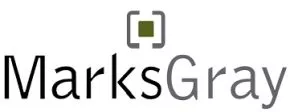- within Immigration topic(s)
- within Immigration, Intellectual Property and Technology topic(s)
- with readers working within the Retail & Leisure industries
The White House has proposed a tiered, wage-weighted lottery for FY 2027 filings. Instead of every registration having the same odds, higher wages earn more entries:
- Wage Level IV → 4 entries
- Wage Level III → 3 entries
- Wage Level II → 2 entries
- Wage Level I → 1 entry
This could mean nearly a 50% drop in selection chances for Level I roles, while Level IV jobs may see odds more than double. The registration process and form will be revised for employers to declare wage level at registration, and petitions must match that level with supporting evidence.
Adding to the disruption is the new $100,000 fee for certain new H-1B petitions, expected to apply mainly to cases filed from abroad. This cost is not expected to affect extensions, employer transfers, or amendments — meaning employers retaining talent already in the U.S.
The silver lining?
Employers hiring OPT and STEM OPT graduates already in the U.S. still benefit from multiple lottery cycles — and may gain an edge if fewer registrations come in from abroad due to the new $100K fee.
With early pipeline reviews and smart use of alternatives (O-1, TN, E-3, green cards), companies can stay competitive — even in this shifting landscape.
What Employers Should Do Now
- Audit your pipeline: Identify candidates likely to fall in Wage Levels II–IV, where lottery odds improve.
- Leverage OPT/STEM OPT: Graduates already in the U.S. have multiple lottery cycles — and may benefit if fewer registrations come from abroad due to the $100K fee.
- Build backup plans: Consider O-1, TN, E-3, or early green card sponsorship to secure key roles.
- Engage in advocacy: Participate in industry coalitions to help shape how these changes are implemented.
- Stay tuned: Guidance (and possible litigation) is evolving — expect updates before the March 2026 registration window.
The content of this article is intended to provide a general guide to the subject matter. Specialist advice should be sought about your specific circumstances.
[View Source]

